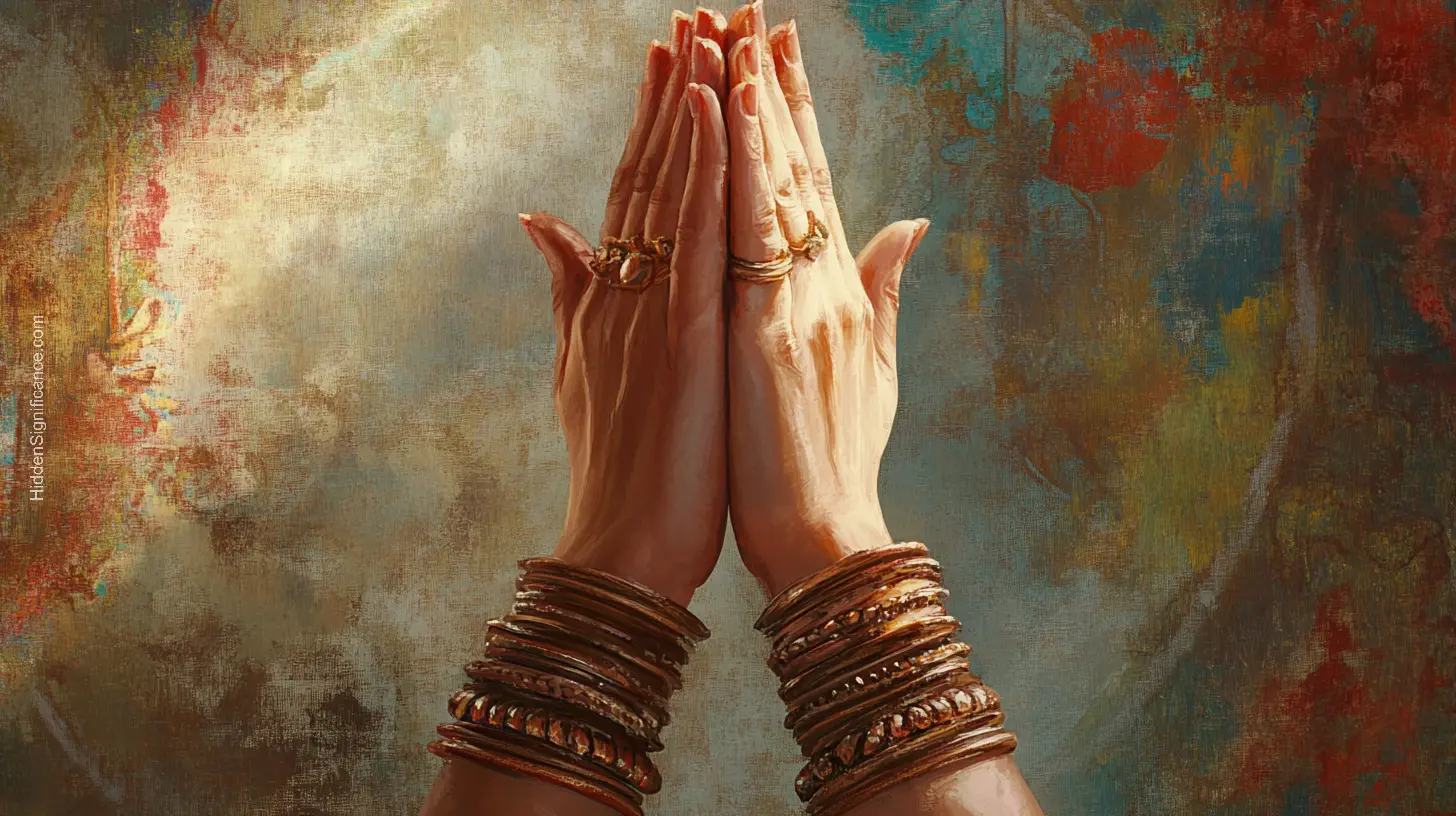
Introduction
Namaste – a simple word that carries a world of meaning. You’ve likely heard it at the end of a yoga class or seen it printed on trendy t-shirts, but do you know the true spiritual significance behind this ancient greeting? Namaste is far more than just a polite way to say hello or goodbye. It’s a powerful acknowledgment of the divine essence that resides within each of us.
In this post, we’ll explore the deep spiritual meaning of Namaste and how understanding it can transform the way we interact with others and perceive ourselves. Whether you’re a seasoned yogi or simply curious about Eastern philosophy, discovering the profound implications of this sacred salutation can bring more mindfulness, respect, and spiritual connection into your daily life.
Key Takeaways
- Namaste recognizes the divine spark or soul within each person
- It symbolizes equality, respect, and the interconnectedness of all beings
- The gesture represents opening the heart and connecting on a soul level
- Saying Namaste encourages mindful presence and acknowledges others’ inherent worth
- Understanding Namaste’s meaning can transform our interactions and self-perception
The Origins and Literal Meaning of Namaste

Sanskrit Roots
Namaste comes from Sanskrit, the ancient language of India and Hinduism. It’s a combination of two words: “namah,” meaning bow or obeisance, and “te,” meaning to you. So the literal translation is “I bow to you” or “I pay my respects to you.”
Beyond Words: The Namaste Gesture
Namaste is often accompanied by a specific gesture called an anjali mudra. This involves bringing the palms together at heart level, fingers pointing upwards, with a slight bow of the head. This physical act embodies the meaning of the word, creating a beautiful synergy of speech and motion.
The Spiritual Significance of Namaste
Divine Recognition
At its core, Namaste acknowledges the divine spark within each person. It’s a recognition that beneath our external differences, we all share the same essential nature – a spark of the divine or universal consciousness. When we say Namaste, we’re essentially saying, “The divine in me recognizes and honors the divine in you.”
Equality and Respect
Namaste is a great equalizer. By acknowledging the divine in everyone we meet, we transcend superficial differences of social status, race, or background. It’s a humble gesture that reminds us of our fundamental equality as spiritual beings.
Interconnectedness
The spiritual meaning of Namaste extends to the idea of interconnectedness. It reinforces the yogic concept that all beings are connected at a deeper level. When we greet someone with Namaste, we’re recognizing our shared humanity and spiritual essence.
Opening the Heart
The physical gesture of Namaste, with hands at heart level, is deeply symbolic. It represents opening our heart to the person we’re greeting. This heart-centered approach encourages us to interact with others from a place of love, compassion, and authenticity.
Mindful Presence
Saying Namaste invites us to be fully present in the moment. It’s an opportunity to pause, make eye contact, and truly acknowledge the person before us. In our fast-paced world, this simple act can be profoundly grounding and connecting.
Namaste in Practice: Bringing the Spiritual into the Everyday

In Yoga and Meditation
Many yoga and meditation classes begin and end with Namaste. This creates a sacred container for the practice, reminding participants of their shared journey and the divine essence within themselves and others.
As a Daily Greeting
Imagine if we approached every interaction with the spirit of Namaste. How might it change the way we treat the cashier at the grocery store, our coworkers, or even those we disagree with? Cultivating this attitude of respect and recognition can transform our daily interactions.
Self-Reflection
The concept of Namaste can also be applied inwardly. Take a moment to consider: how often do you acknowledge the divine within yourself? Practicing self-Namaste can be a powerful tool for cultivating self-love and recognizing your own inherent worth.
Namaste Across Cultures
While Namaste originates from Hindu and yogic traditions, its essence resonates across many spiritual paths. Consider these parallels:
- The Christian concept of seeing Christ in everyone
- The Buddhist practice of recognizing Buddha nature in all beings
- The Mayan greeting “In Lak’ech,” meaning “I am another you”
These similarities highlight the universal human longing to recognize the sacred in ourselves and others.
Namaste in the Modern World

Cultural Appropriation Concerns
As Namaste has gained popularity in the West, some have raised concerns about cultural appropriation. It’s important to use this greeting mindfully, with respect for its origins and deeper meaning.
Bridging East and West
Despite these concerns, many see Namaste as a beautiful bridge between Eastern and Western spirituality. It offers a way to bring more mindfulness and spiritual awareness into our daily lives, regardless of our cultural background.
FAQ: Common Questions About Namaste
Is it appropriate for non-Hindus to say Namaste?
Generally, yes, if done respectfully and with understanding of its meaning.
When should Namaste be used?
It’s commonly used as a greeting or farewell, especially in spiritual contexts.
Is Namaste only used in India?
While originating in India, it’s now used globally, especially in yoga communities.
Does Namaste have to be said with the hand gesture?
The gesture enhances the meaning, but Namaste can be said without it.
Can Namaste be used in professional settings?
It depends on the context. In some cultures, it’s a common professional greeting.
Conclusion
The spiritual meaning of Namaste offers us a profound way to approach our interactions with others and ourselves. It’s an invitation to see beyond the surface, to recognize the inherent worth and divinity in every being we encounter. By embracing the spirit of Namaste, we open ourselves to deeper connections, greater respect, and a more spiritually aligned way of moving through the world.
As you go about your day, consider how you might incorporate the essence of Namaste into your life. How might it change your interactions if you silently acknowledged the divine spark in everyone you met? How might it transform your self-perception if you regularly honored the sacred within yourself? The beauty of Namaste lies not just in saying the word, but in living its meaning.





